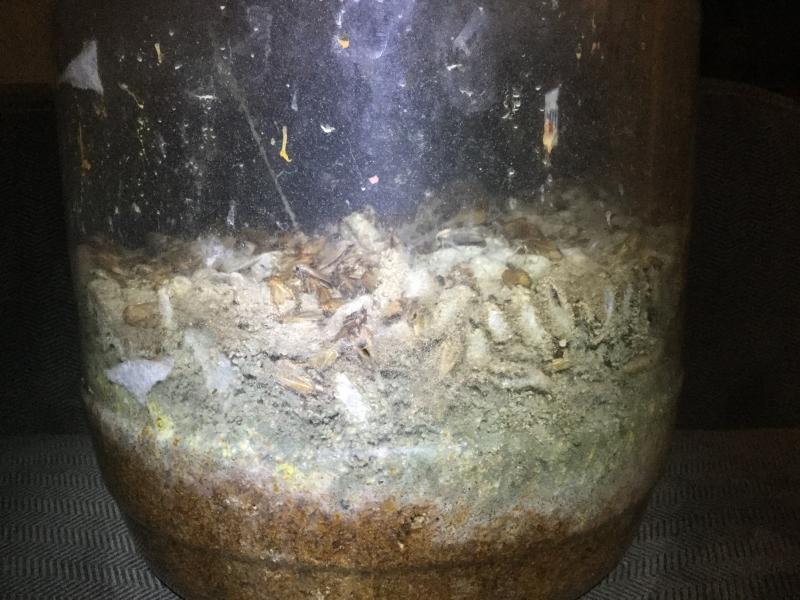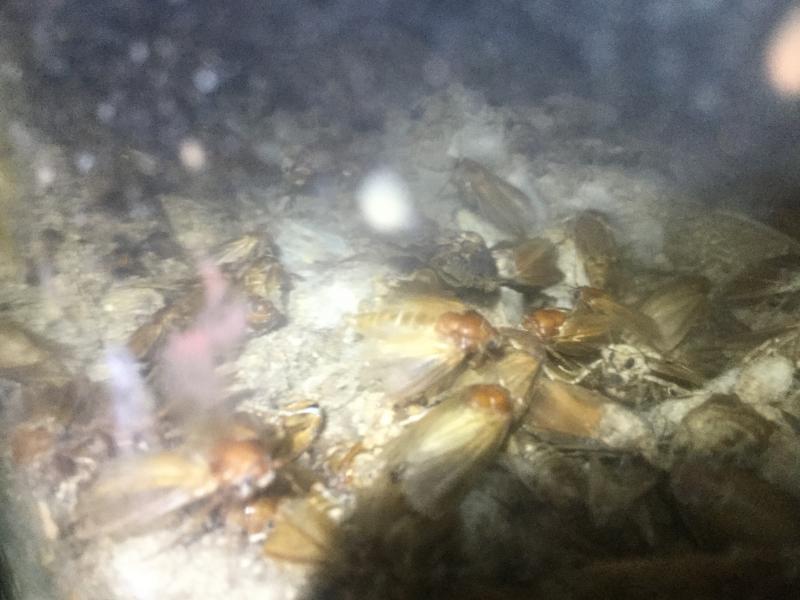richard22
Arachnosquire
- Joined
- Aug 14, 2019
- Messages
- 97
I have been breeding wax worms for a few months now, after it took two generations for the wax moths to be all fertile probably because they were almost all redered infertile. Now I use a large pretzel jug for my hundred or so moths and many larva in my hot attic for fast breeding. I never considered using netting as ventilation or mold inhibiting chemicals, so now I have a mold outbreak on the frass layer. I have heard mold inhibitor might do the trick, so if I were to add potassium sorbate to the bedding mix, how much should I use or can I use too much? Are mold inhibitor chemicals toxic to these insects, or insects in general, because I could see myself using mold inhibiting chemicals in my ecoearth substrates in my vivariums so mold doesn’t grow over cricket eggs, because it is growing at the bottom of my cricket culture and might reach the eggs.

As you can see, mold, olive gray and even yellow, has followed through the frass layers. Also, peculiarly, many of the moths have caramel wings and a red thorax behind their head. I have been unable to find any info on wax moths that look like this. Could this be some sort of natural selection of evironmental adaptation in play?

Large scale waxworm breeding seems to be a bit uncommon, and complicated. I am on track to a huge number and eventually I’ll have to keep it from spiraling. I am struggling thinking of how you would end up replacing bedding after it has been consumed when there are hundreds of moths on top of it and hundreds of larva all in it too. Would I need some sort of hole in the side to grab material out of the bin, or should I empty all the moths into a big fish tank and filter out the frass from the worms and pupa cocoons somehow. I’ll have to do the latter to get rid of the moldy frass though, ASAP. I need some long-term waxworm farming tips if anyone knows from experience.
This is a repost from the same poster from http://www.openbugfarm.com/forum.ht...ong-term-waxworm-breeding-and-mold-prevention

As you can see, mold, olive gray and even yellow, has followed through the frass layers. Also, peculiarly, many of the moths have caramel wings and a red thorax behind their head. I have been unable to find any info on wax moths that look like this. Could this be some sort of natural selection of evironmental adaptation in play?

Large scale waxworm breeding seems to be a bit uncommon, and complicated. I am on track to a huge number and eventually I’ll have to keep it from spiraling. I am struggling thinking of how you would end up replacing bedding after it has been consumed when there are hundreds of moths on top of it and hundreds of larva all in it too. Would I need some sort of hole in the side to grab material out of the bin, or should I empty all the moths into a big fish tank and filter out the frass from the worms and pupa cocoons somehow. I’ll have to do the latter to get rid of the moldy frass though, ASAP. I need some long-term waxworm farming tips if anyone knows from experience.
This is a repost from the same poster from http://www.openbugfarm.com/forum.ht...ong-term-waxworm-breeding-and-mold-prevention
